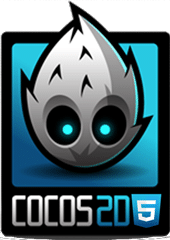The following are the Gamefromscratch.com tutorials covering Cocos2D-html, the HTML5 port of
The tutorials were all updated on 8/12/2012 to the newest cocos2D code base.
Tutorials
Tutorial 1: Getting set up and running
This tutorial covers getting Cocos2D up and running on your development machine. This includes installing WAMP, an Apache based web server. At the end of this tutorial, you will be able to run all the demos and get started developing with Cocos2D HTML.
Tutorial 2: Why it’s Hello World of course!
In this tutorial, you will create your very first Cocos2D application, the ubiquitous Hello World. It goes through the creation of boilerplate code and explains program execution flow. By then end of this tutorial, you will have a running Cocos2D HTML application.
Tutorial 3: All about sprites and positioning
This tutorial covers the process of loading a sprite from file and displaying it on screen. It also goes into detail about how Cocos2D deals with coordinates, something it does very differently from many applications. By the end of this tutorial, you will be able to draw and position sprites.
Tutorial 4: It’s all about control
This tutorial covers handling input and mouse events in cocos2D. By the end of this tutorial, you will be able to add mouse and keyboard controls to your game.
Tutorial 5: Menus, sounds, and music
This tutorial covers playing music and sound effects. It also demonstrates creating a menu and handling menu selections.
Tutorial 6: Spritesheets
This tutorial covers creating and using spritesheets, a collection of sprites in a single image.
Related content
Setting up JetBrains WebStorm to work with Cocos2D
This post goes through configuring the IDE WebStorm so auto-completion works ideally with Cocos2D.
Cocos2D book round-up
This is a one-page resource for all books currently available on Cocos2D, the library cocos2D-x and cocos2D-HTML are based off. If you are looking for more details, this is a good place to start.
Cocos2D with a Node.js server
This post is part of a series on creating a simple client-server game. This covers how to host a cocos2D application in a Node server.
Cocos2D alpha 2 released. Small changes required
With the release of alpha2, some very minor changes were added that effect tutorials 2, 3, and 4. This post describes those changes and how to fix your code to work with alpha 2. Don’t worry, the changes are extremely minor.
